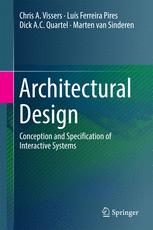

Most ebook files are in PDF format, so you can easily read them using various software such as Foxit Reader or directly on the Google Chrome browser.
Some ebook files are released by publishers in other formats such as .awz, .mobi, .epub, .fb2, etc. You may need to install specific software to read these formats on mobile/PC, such as Calibre.
Please read the tutorial at this link: https://ebookbell.com/faq
We offer FREE conversion to the popular formats you request; however, this may take some time. Therefore, right after payment, please email us, and we will try to provide the service as quickly as possible.
For some exceptional file formats or broken links (if any), please refrain from opening any disputes. Instead, email us first, and we will try to assist within a maximum of 6 hours.
EbookBell Team

5.0
78 reviewsThis book presents a design methodology that is practically applicable to the architectural design of a broad range of systems. It is based on fundamental design concepts to conceive and specify the required functional properties of a system, while abstracting from the specific implementation functions and technologies that can be chosen to build the system. Abstraction and precision are indispensable when it comes to understanding complex systems and precisely creating and representing them at a high functional level. Once understood, these concepts appear natural, self-evident and extremely powerful, since they can directly, precisely and concisely reflect what is considered essential for the functional behavior of a system.
The first two chapters present the global views on how to design systems and how to interpret terms and meta-concepts. This informal introduction provides the general context for the remainder of the book. On a more formal level, Chapters 3 through 6 present the main basic design concepts, illustrating them with examples. Language notations are introduced along with the basic design concepts. Lastly, Chapters 7 to 12 discuss the more intricate basic design concepts of interactive systems by focusing on their common functional goal. These chapters are recommended to readers who have a particular interest in the design of protocols and interfaces for various systems.The didactic approach makes it suitable for graduate students who want to develop insights into and skills in developing complex systems, as well as practitioners in industry and large organizations who are responsible for the design and development of large and complex systems. It includes numerous tangible examples from various fields, and several appealing exercises with their solutions.